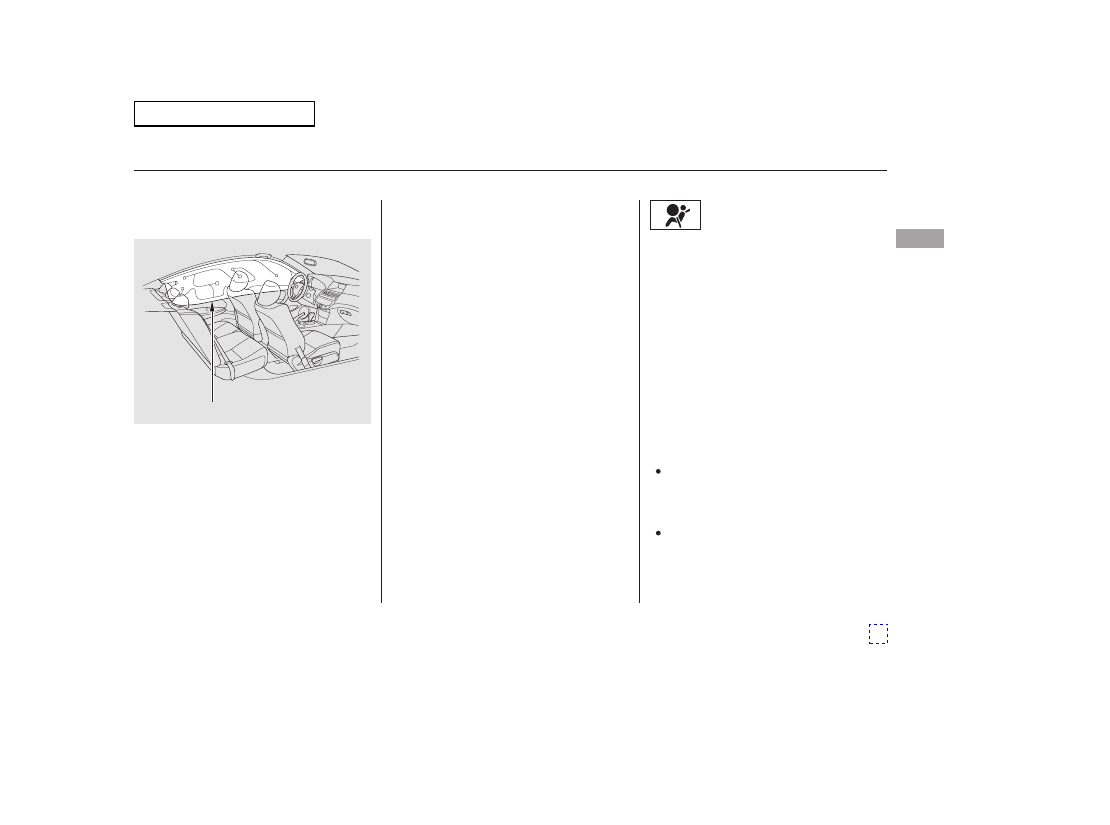Honda Accord Coupe L4 (2011 year). Manual - part 3

When you turn the ignition switch to
the ON (II) position, this indicator
comes on briefly then goes off. This
tells you the system is working
properly.
If the indicator comes on at any
other time, or does not come on at all,
you should have the system checked
by your dealer. For example:
If the SRS indicator does not come
on after you turn the ignition
switch to the ON (II) position.
If the indicator stays on after the
engine starts.
If the impact is on the passenger’s
side, the passenger’s side curtain
airbag will inflate even if there are no
occupants on that side of the vehicle.
One or both side curtain airbags may
inflate in a moderate to severe
frontal collision which causes the
front airbags to deploy.
To get the best protection from the
side curtain airbags, occupants
should wear their seat belts and sit
upright and well back in their seats.
In a moderate to severe side impact,
sensors will detect rapid acceleration
and signal the control unit to
instantly inflate the side curtain
airbag.
The SRS indicator alerts you to a
potential problem with your airbag
system components.
CONTINUED
Additional Information About Your Airbags
How the SRS Indicator
Works
How Your Side Curtain Airbags
Work
Dr
iv
er
and
P
asseng
er
Saf
e
ty
SIDE CURTAIN AIRBAG
Main Menu